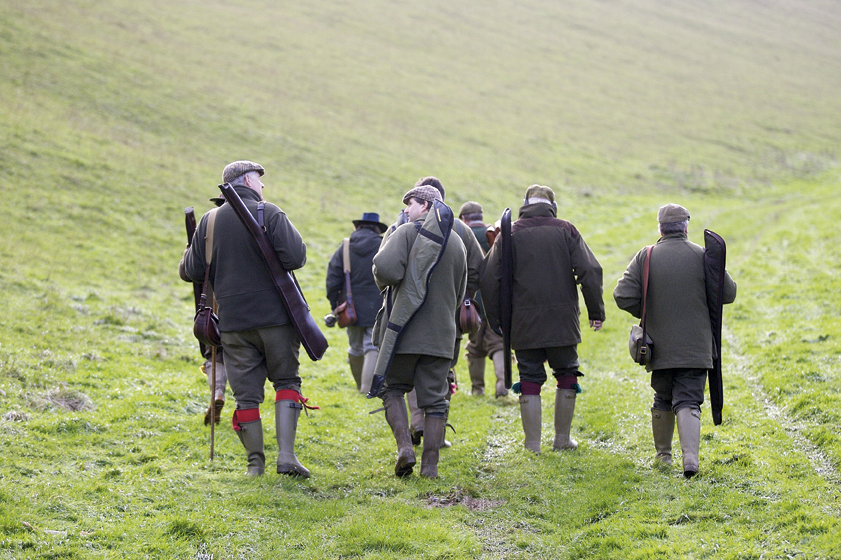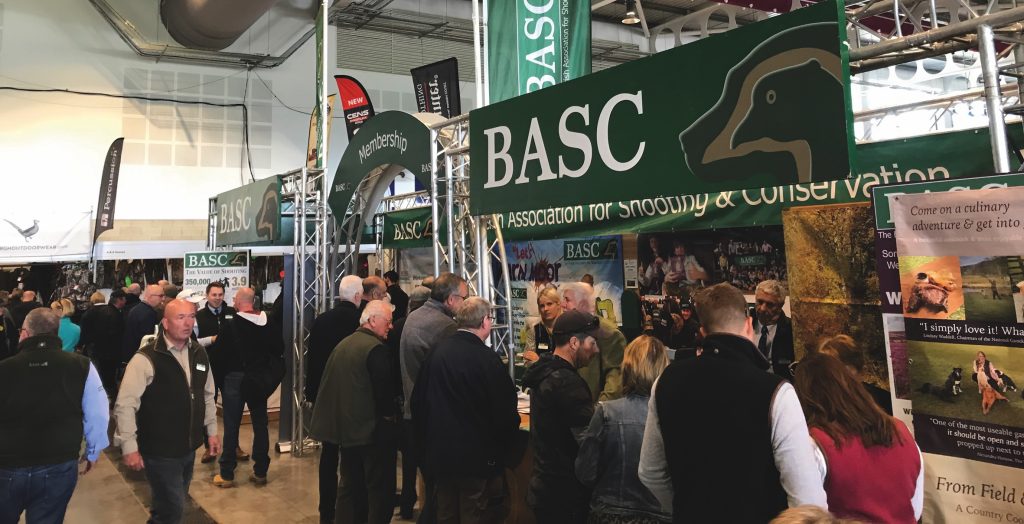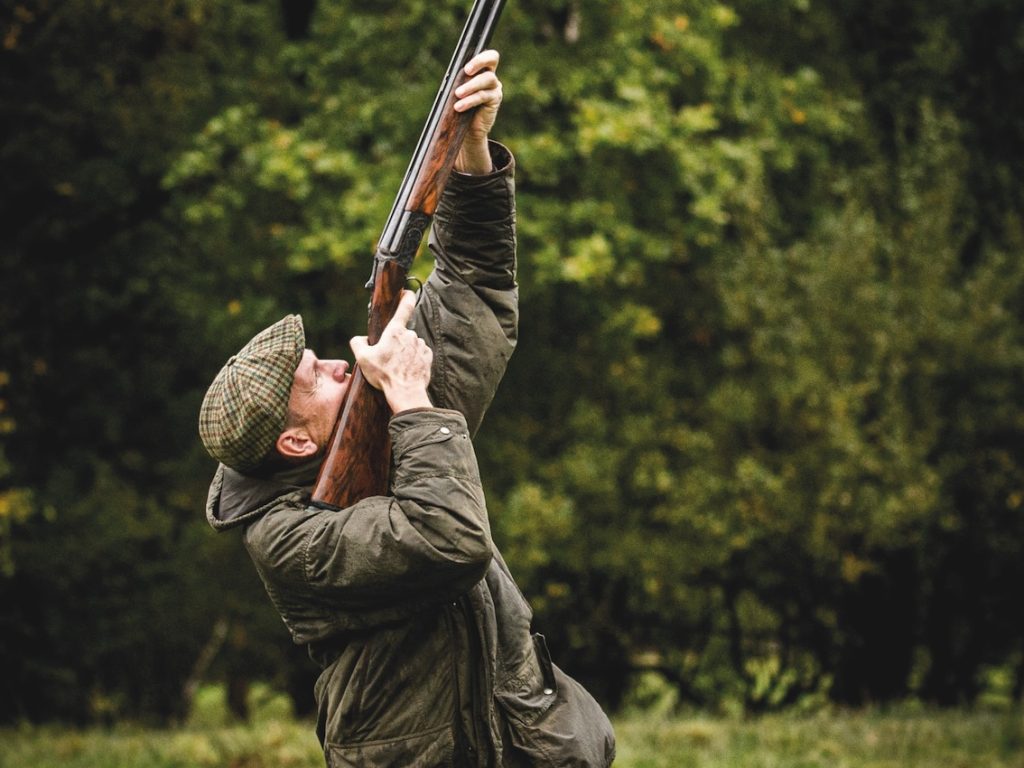Win CENS ProFlex DX5 earplugs worth £1,149 – enter here
Partridge and pheasant shooting in Salisbury
Partridge and pheasant shooting in Salisbury: A family run partridge and pheasant shoot with some 'big boys' drives, Stoke Drove delivers time after time.

Partridge and pheasant shooting in Salisbury.
Natural topography plays a vital part in game shooting, and nowhere does it help mankind to deliver better than in Wiltshire’s Chalke valley.
The shoots in this golden crescent of countryside to the west of Salisbury reside in every shooting man’s wish list of the most desirable venues. Collectively, they have carved out a remarkable reputation for showing sporting birds of the best kind.
From Rushmore in the west, through Ashcombe, Prescombe, Fifield and Gurston Down to Knighton, Flamstone and Clarendon in the east, Mother Nature and the good Lord have produced valleys that promise class action.
In the midst of this sporting cornucopia is the 1,100 acres of Stoke Drove, and, like much of the land in the valley, was once part of the Wilton Estate which borders it to the north.
Previously farmed by the author J.F.H.Thomas and subsequently farmed for 40 years by the Pickford family, the shoot has developed its own following and we were there to watch a visiting syndicate tested by its best partridge on a prime December day.
Hugh Pickford and his son, Matthew, take great pride in running days that are as much about family values as overt commercial criteria, as Hugh explained: “When we moved here first, I shared the tenancy with the Duke of Newcastle and for our first 30 years it was run as a tenant shoot.
“When he died, his heir was actually older than him and he himself died within a month of inheriting, so I suppose I am one of the few people to be able to claim a right-and-left of Dukes!”
“The estate had no male heir and was run for some years by trustees but eventually in 1995, the trust decided to sell up and in return for releasing our rights on the houses in which we lived, we and the other working farmers in the valley were able to buy our land.
“That was a big milestone for our family, so we looked at ways to increase the profitability; commercial shooting was one answer. This year we will shoot 40 game days so it’s a big part of our business. Matthew manages the farm now, I host the game days with him and our wives help out – so it is very much a family atmosphere.”
Up to 100 Charolais, Limoussin and Belgian Blue cattle crosses are fattened annually on the farm and Matthew has recently entered into a co-operative venture with two of his neighbours, which allows 1,850 acres to be worked as one arable unit.
“Working together gives us greater economy of scale and commercial power in the market and gives me more time to look at our shooting and other diversification,” said Matthew.
“Here at Stoke Drove we have very little woodland so we need to take particular care with our cover crops and this year we have drilled around 65 acres of a combination of hybrid maize and millet with each plot surrounded by at least one protective ring of sorghum.
“We purposely leave some gaps in the crop to encourage the birds and we find having bounced out over the higher stems, they fly very well. We have over five miles of grass margins which the birds like and we have learned it’s easier to place the guns where we know the birds will fly rather than trying to get them to fly where they don’t.”
As the birds made their way tentatively over the guns on the first drive at Bushes, it quickly became apparent just why it is that Stoke Drove has such a following.”
Singularly, in pairs and finally in small coveys, the partridges flushed from some way back had attained warp speed by the time they broke over the valley side, where Mark Aldridge and Clifford Stuart dealt best with the skewing, jinking birds.
Eminently shootable, but in no way easy, the later birds were quicker yet, and as the horn from keeper, David Cutler, brought guns to slips, there was much contemplation from the line. “Always good to get the easy drive over early,” quipped Matthew, as he passed by, and the guns didn’t know whether to believe him!
They found out on the second drive at Bake, which was similar terrain and if anything was more testing. This land is still wild enough to provide a perfect habitat for raptors and before pegging out, everyone watched in appreciation as a peregrine falcon held lazily in the wind, before stooping away into the distance to ride the thermals over the escarpment.
Having begun to find their form, the guns enjoyed a nourishing soup before pegging out over winter wheat drills at Fox Lynch, the line preparing for some serious action. Henry Trembecki and Richard Makowski were best placed to take advantage of a small copse that bisected the bank in front of the line and funnelled the little brown rockets in their direction, but a combination of changing wind direction and perfidious partridge gave some small respite.
For the final drive before lunch, guns pegged out in an arc around a bank at Lodges. Number five was the hot spot here, facing a fence line running down the slope and Richard Curry was the lucky recipient. Treated to a progression of beautifully presented birds that swooped and then rose sharply to clear a higher bank behind, he and Anton Skillman to his left took full advantage and though the team had initially been slow off the mark earlier in the day, had accounted for better than 125 birds by the time they retired to the shooting lodge for lunch.
“The Pickford’s main love is partridge and it shows. The majority of birds put down have been partridges and they come to Stoke at around 12 weeks which gives enhanced survival and stronger, faster flying birds.”
Over roast lamb, the talk turned to how Stoke Drove delivers its sport and how it is being continually developed and diversified to meet the commercial challenges.
“Good healthy stock is the key here,” says Hugh. “Our keeper who has been with us for 14 years is a quiet, thoughtful stockman, who loves his birds. Shooting is a big part of our commercial mix, but we rent out up to 150 acres to a turf company and run 28 simulated clay days through the summer. This shoot lodge came from Finland and we erected it ourselves but we see it as an amenity and let it out for conferences and meetings so nothing lies idle.
“We are concentrating on our 14 best drives, which give shooting across all pegs and we can show really good 200-250 bird days. We see about a 60% return on our redlegs and pheasants but when we started shooting here, we were lucky if we saw 20% back on our English partridges; circumstances change and we have to take a different view when we take agricultural land out of cropping to support the shooting. We view the birds as a harvest and everything goes in the food chain. All birds and venison go to Hampshire Game.”
Whether as a result of the shoot captain’s remarks over pudding or the Pickford’s management of the afternoon drives, there was a dramatic improvement in performance after lunch, which was unusual. The Dove Down drive produced another stunning display of birds which zipped over two small undulations in the ground before soaring high above the line and the drive was memorable for the accuracy of Richard Gough and David Allenby, who traded left and rights.
By the end of the day there were 249 birds in the chiller and smiles on the faces of guns and hosts alike.
For more information on game or simulated clay days at Stoke Drove contact Matthew Pickford on 01722 718587 or stoke.farms@farmline.com
Read about more game shooting!
Related Articles
Get the latest news delivered direct to your door
Subscribe to Shooting Times & Country
Discover the ultimate companion for field sports enthusiasts with Shooting Times & Country Magazine, the UK’s leading weekly publication that has been at the forefront of shooting culture since 1882. Subscribers gain access to expert tips, comprehensive gear reviews, seasonal advice and a vibrant community of like-minded shooters.
Save on shop price when you subscribe with weekly issues featuring in-depth articles on gundog training, exclusive member offers and access to the digital back issue library. A Shooting Times & Country subscription is more than a magazine, don’t just read about the countryside; immerse yourself in its most authoritative and engaging publication.







